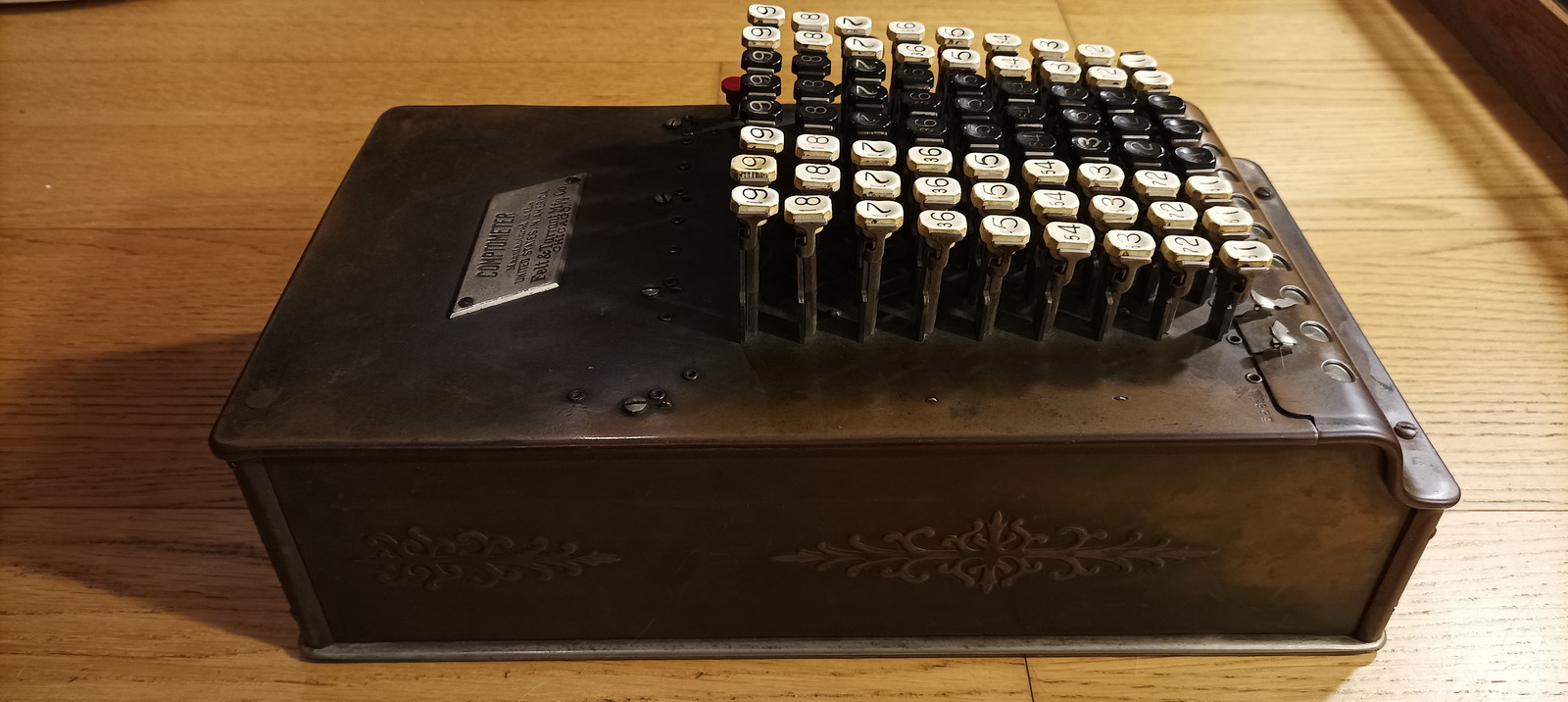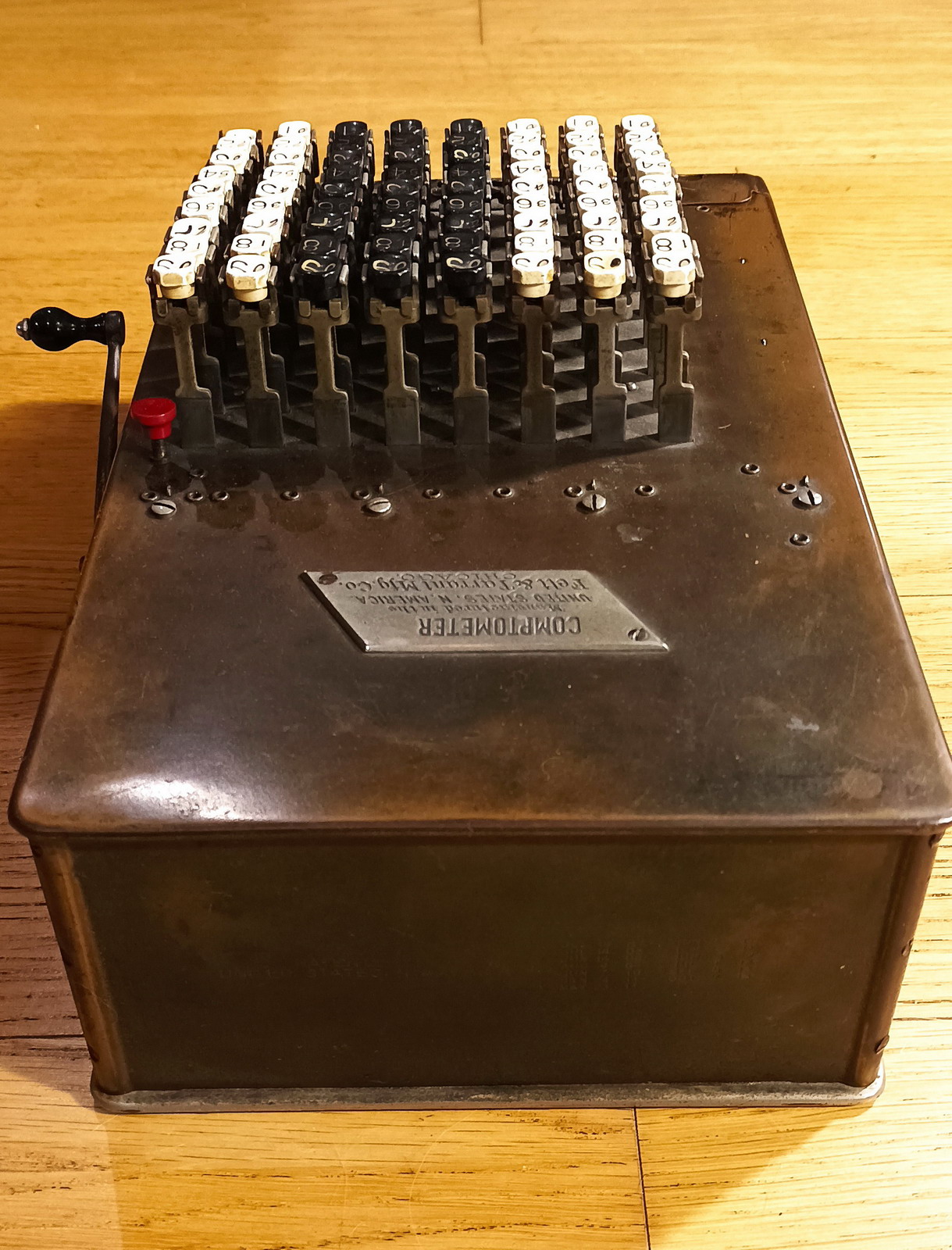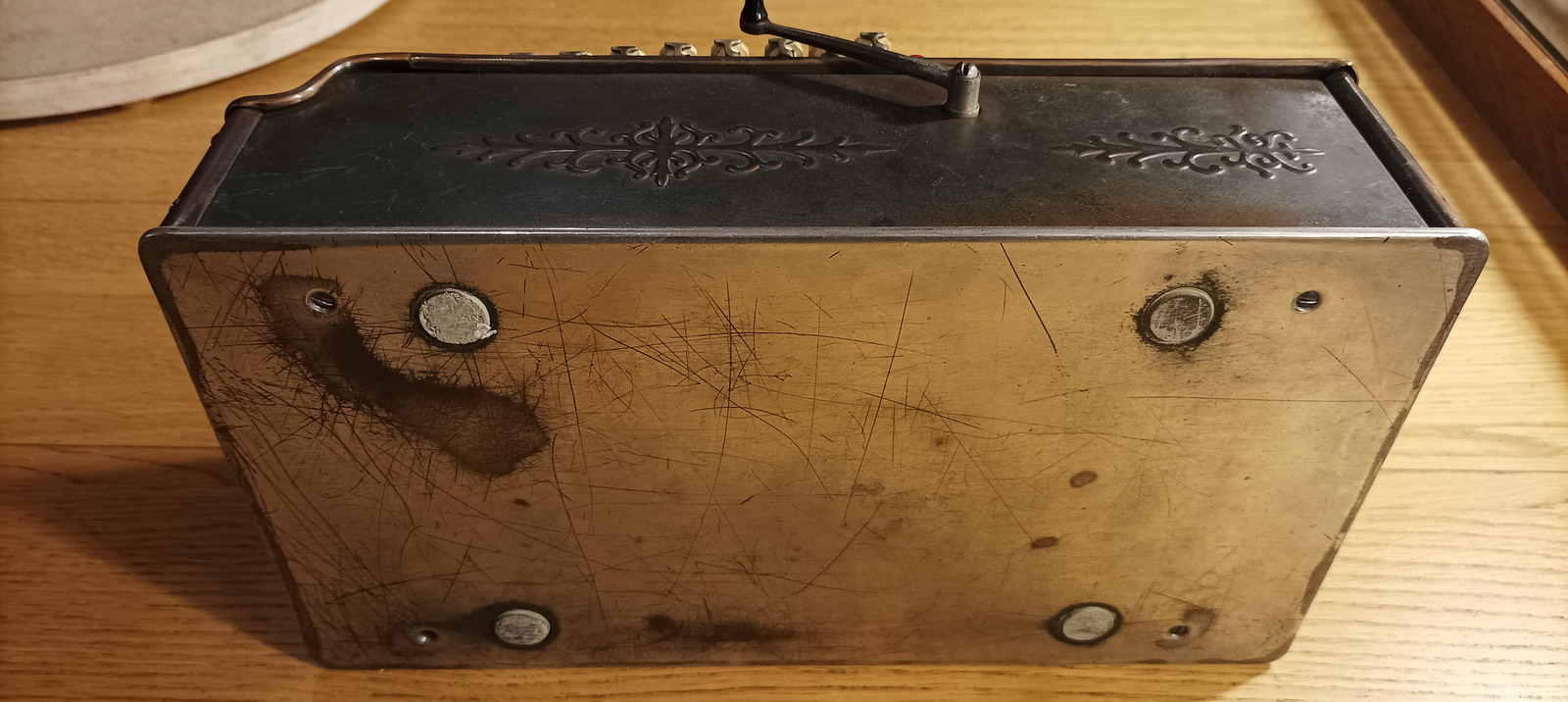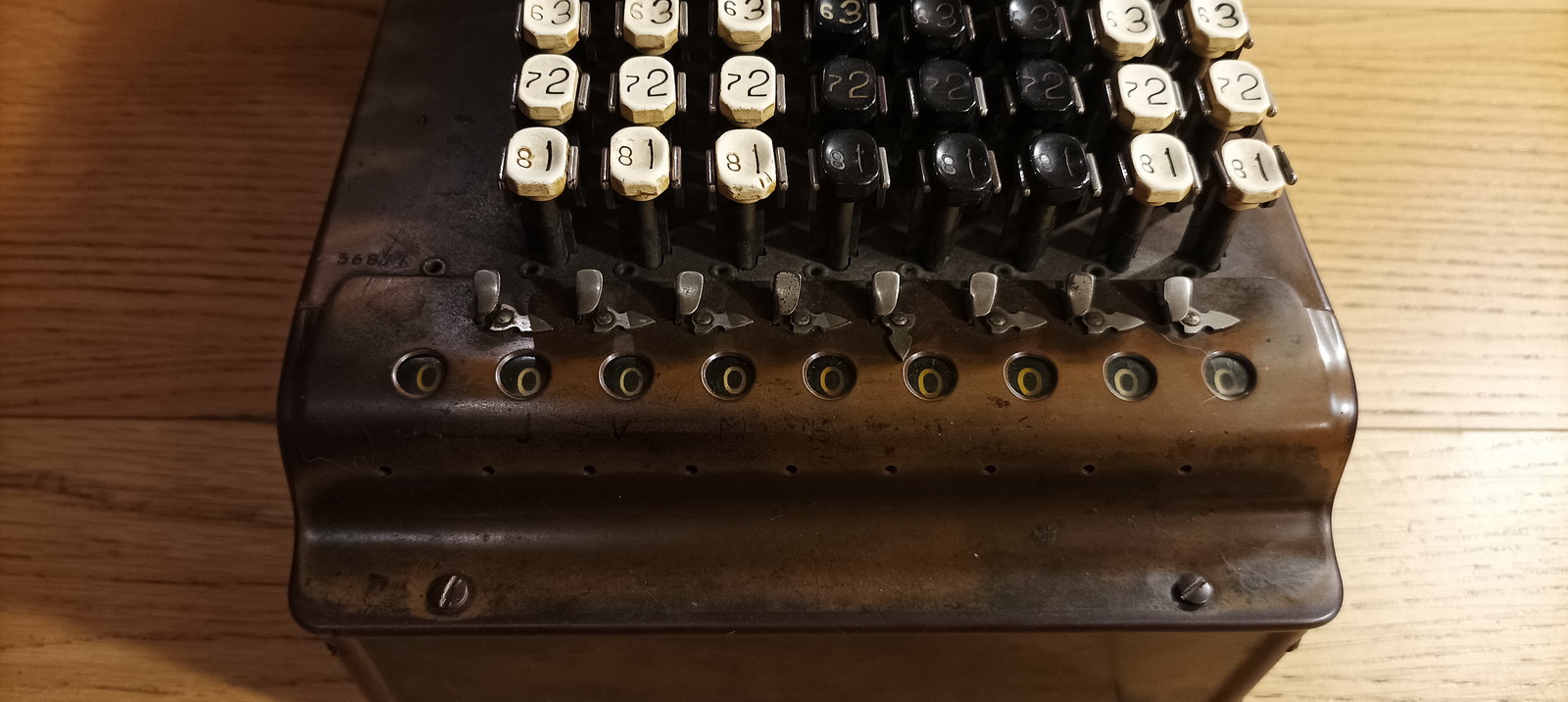Comptometer E
I keep telling myself that I don’t collect comptometers, but when a very rare one such as this model E tempts me for weeks on end on a Dutch second hand site, and I have family living in that place coming over to Antwerp anyway, then I can’t help asking them to stop by there and picking the thing up. This nearly ended in disaster, as when they arrived, the shopkeeper told them “Oh, but it is reserved” - “but wait, the reservation has expired”. Apologies, Gert-Jan, who reserved the machine, if you’re reading this - you know where it ended up now.So, the Comptometer E. One of the rarer variants, with only about 7700 examples made. The “Duplex” system, where keys in different columns can be pressed at the same time without mucking up the tens’ carries, was already established from the model A on, but two other perceived problems were solved in this machine for the first time: first off, it has the “controlled key” mechanism. Registration of the value only happens on the upstroke, after the key has been completely pressed down. If, accidentally, a key is only partially pressed, then the entire machine blocks, apart from the column where the erroneous keystroke has taken place. The operator then knows which column to add what number to, and can then press the little button on the top right of the keyboard (people keep writing that in this model it should be white, but I’ve seen as many of them being red as well) to unlock all the other columns.
Problem number 2 was accidentally striking a key in the next column. To avoid this, a mechanism has been added with a spring in the keytop, so that the key can only be struck if the keytop is depressed first. When erroneously striking a key from the side, you depress the metal side of the key first, and not the keytop itself. Hence, the key remains blocked. See the video below to see this system in operation. It turned out that there was no demand for this system, because trained operators didn’t screw up like this, and hence it quickly and quietly disappeared again in the model F. See also the excellent website of Jaap Scherphuis to see some detailed pictures of how this mechanism works exactly.
Now, about the machine itself. The complicated keytops (both in design and assembly) had a relatively thin stem, that especially for the 9 keys at the back was also very vulnerable. This machine was a case in point, as someone had bumped into something with it, and leftmost rear 9 key had cleanly broken off at its weakest point below the top plate. The 9-key in the 7th column was bent. Due to the lower part of the key stem still being stuck in the mechanism, the last column was blocked, but I had the feeling this would be easy to remedy.
Comptometers are easy to work on if you know how to approach them - undo the screws at the bottom and the clearing handle, and the result register cover, and the entire machine drops out of the copper box, giving easy access to the bottom. Unhooking one spring per key and some fiddling releases them, including the broken one. This is it:
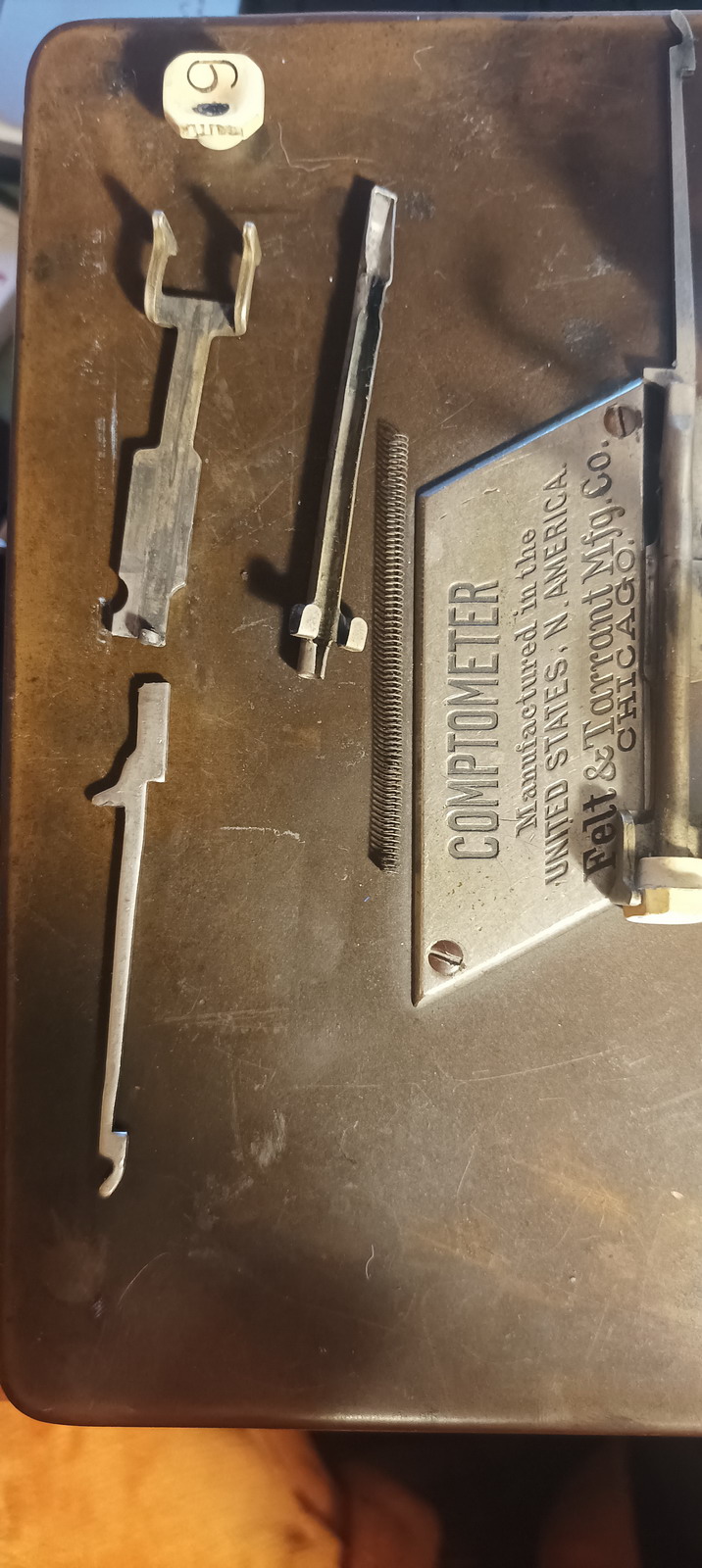
The two parts of the key mechanism were then reunited on my workbench, and a spot of silver solder later, it was as good as new.
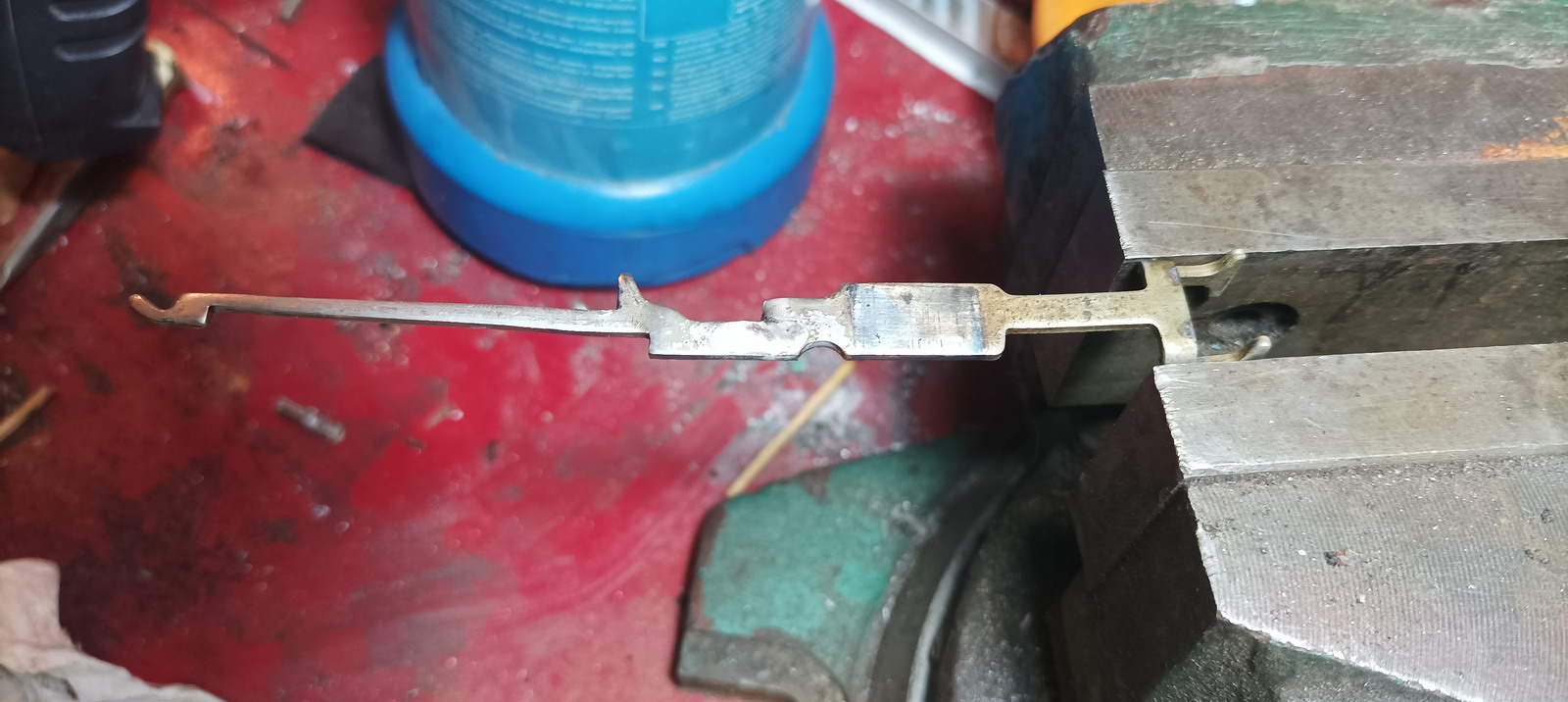
Another very easy fix was the very UV-affected celluloid. It’s just a question of cutting one side slightly and sliding it over to expose fresh celluloid. In another 110 years, I can still flip it over and do that trick again (I would have flipped it now, but it already had holes, I suspect someone flipped it once much earlier in its life for exactly that reason).

So with that done, it was time for pictures, and for taking the rejuvenated machine for a spin.
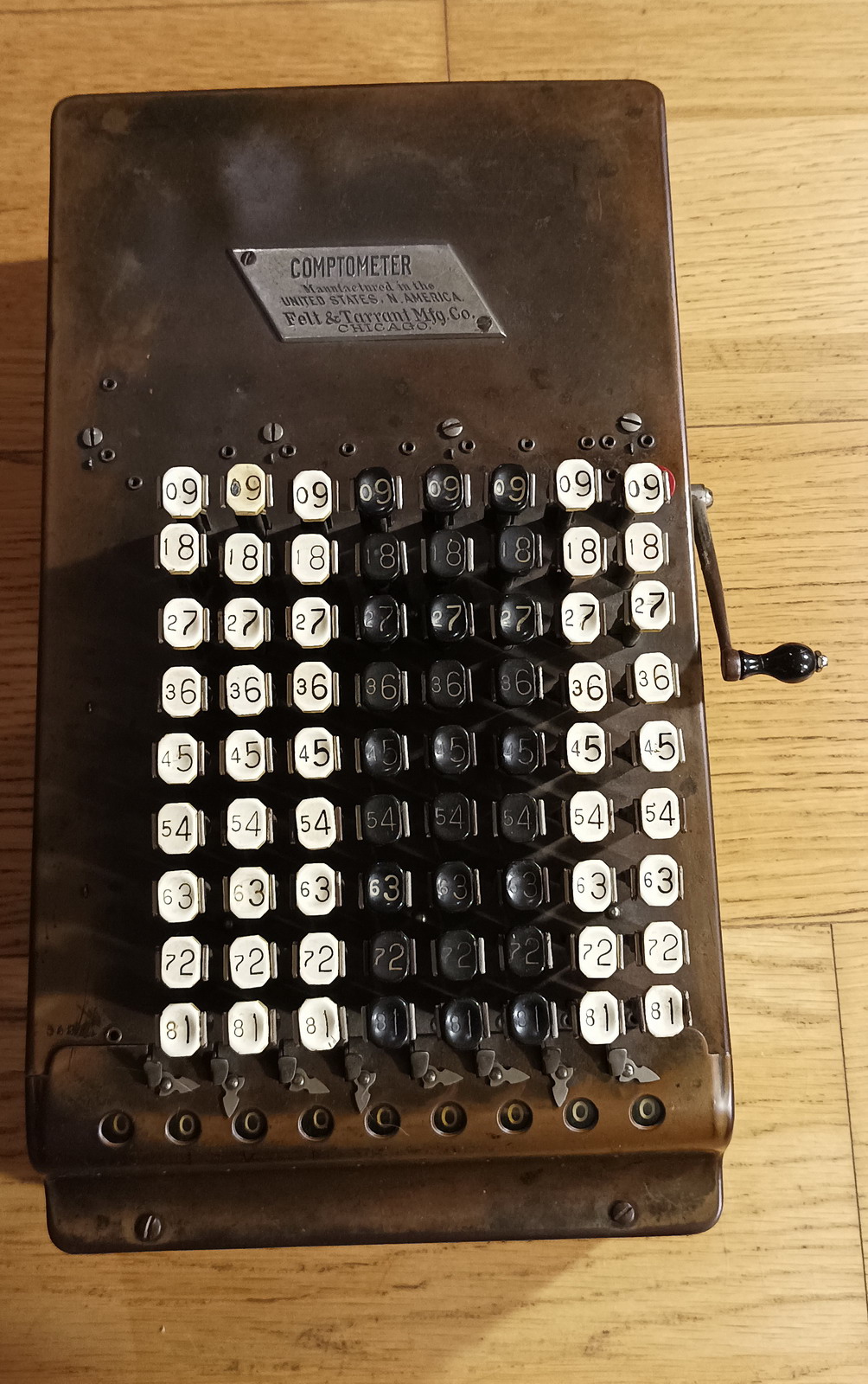
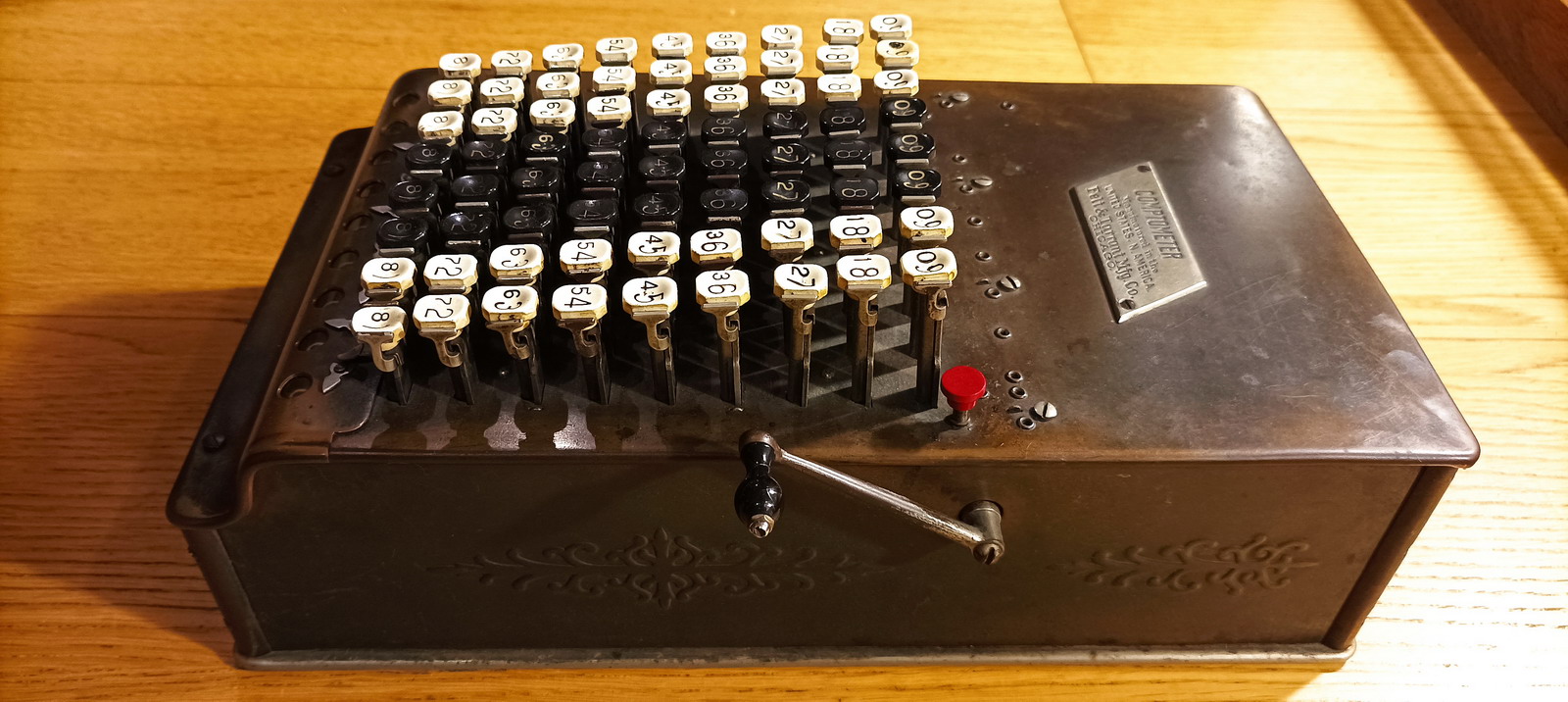
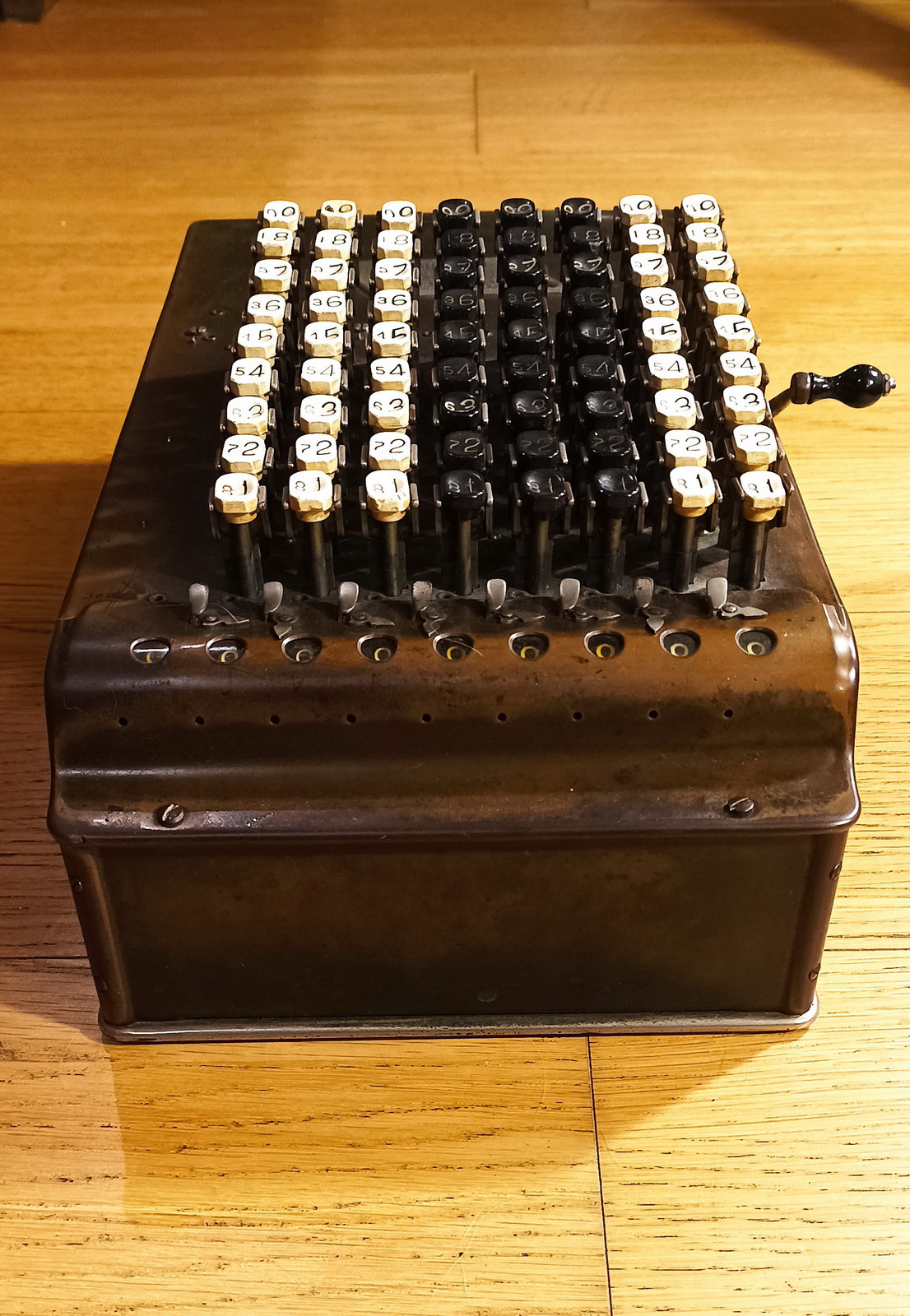
Note: decorative scrolls on the side, but no Comptometer logo on the front.
